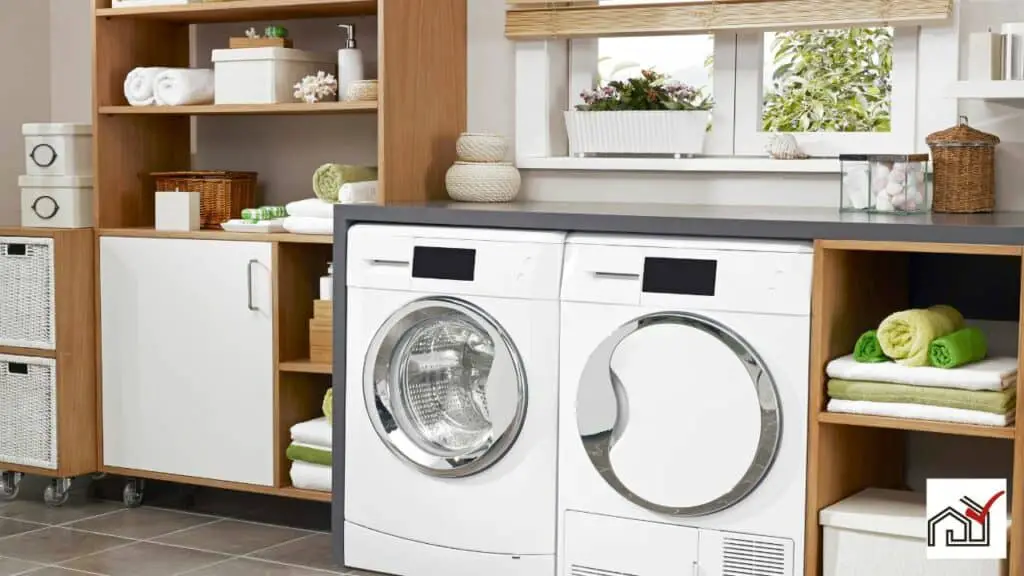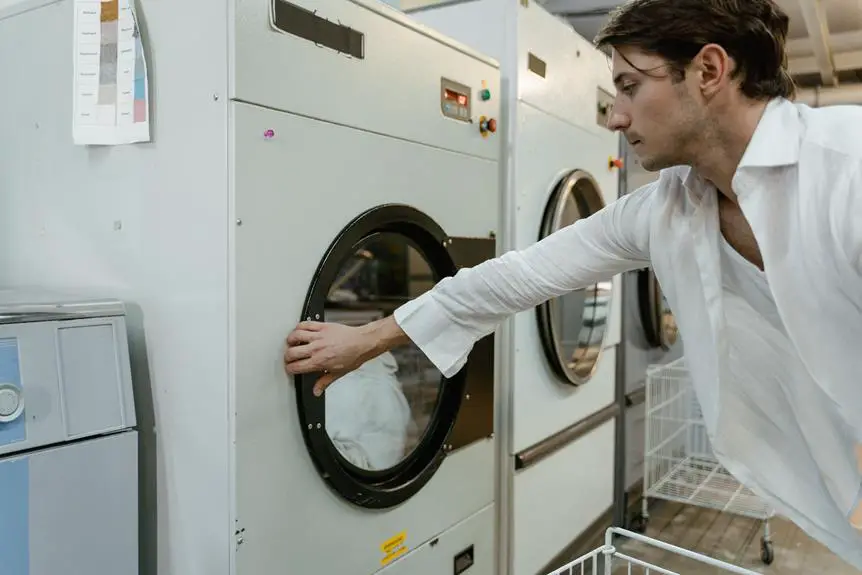The average laundry room measures approximately 6 feet by 9 feet. This size accommodates a washer and dryer, as well as necessary storage. It provides enough room for door opening and user movement.
This overview will cover the minimum space needed, common layouts, and washer and dryer dimensions. It will also address how to add features and make the most of limited space to maintain functionality and efficiency.
Understanding Laundry Room Essentials
Efficiency is key in designing a laundry room to meet a household's needs. In the U.S., the average laundry room is 54 square feet, which generally fits washers, dryers, and some storage. Design should include not just these appliances but also counter space for folding and storing laundry products.
Layout planning is crucial for space utilization. Adequate space for appliance doors to open is important to avoid blocking movement. A sink is useful for hand-washing and treating stains, as well as for other cleaning tasks.
Larger homes may have laundry rooms with more counter space and storage cabinets, which helps in organizing and folding laundry. In smaller homes, laundry rooms can be as small as 3ft x 3ft, where stackable washer-dryer sets save space, possibly allowing for a small folding area.
The goal is to create a functional layout that makes the laundry process efficient, regardless of the room's size. This ensures the laundry room is both effective and flexible for the household's needs.
Minimum Space Requirements
A functional laundry room should be at least 42 square feet to fit essential appliances and allow room for basic movement. For a minimalistic setup, a space of 9 square feet can accommodate a stackable washer and dryer, but an additional 18 to 36 inches of clearance on each side is necessary for appliance operation and storage access.
The width of the laundry room should be a minimum of 6.5 feet without cabinets to ensure clear passage. If cabinets are included, the width should be at least 8.5 feet to avoid a cramped space.
Properly implementing minimum space requirements ensures the laundry room is practical and user-friendly. Adequate space for movement and appliance use is crucial for functionality.
Standard Laundry Room Layouts
Standard laundry room layouts typically come in three designs: side-by-side, L-shaped, and U-shaped. The choice of layout depends on personal preference, the space available, and the laundry room's needs.
The side-by-side layout places the washer and dryer next to each other, often under a countertop for folding or ironing. This setup is space-efficient, suitable for medium-sized rooms, and allows for easy machine access and overhead storage.
The L-shaped layout arranges the washer and dryer in an L shape, providing more counter space for laundry tasks and the possibility of including a sink or ironing board. This layout separates the room into different work areas, making it good for multitasking.
The U-shaped layout is ideal for larger homes, offering a wraparound workspace with the washer and dryer either side by side or stacked if space is limited. It may include a central island for folding and can have sliding or pocket doors to hide the area when not in use. This design offers plenty of storage and is a comprehensive solution for extensive laundry needs.
Washer and Dryer Specifications
Standard washers and dryers are typically around 27 inches wide. The depth varies from 25 to 32 inches, depending on the model. It's important to account for not only the space these appliances will take up but also additional space needed for their operation. In small laundry rooms, choosing a washer with a smaller depth can be beneficial.
Top-loading washers are suitable for areas where a front-loading door might restrict movement, but they require at least 32 inches of clearance in front for loading and unloading. If installing a sink as well, careful planning is needed to ensure the space isn't too tight.
The space allocated for laundry appliances determines how much room is left for other features like cabinets and folding areas. In larger laundry rooms, washers and dryers can be placed side by side with enough space to move around. Stacking the appliances can save floor space but requires a ceiling height of at least 8 feet to fit the stacked configuration.
When planning a laundry room, it's crucial to balance the dimensions of the appliances and the required operational space with the room's functionality and overall size. Proper planning leads to an efficient, ergonomic, and visually appealing laundry room.
Additional Laundry Room Features
When planning a laundry room, it's important to consider extra features to improve its usefulness. A sink is useful for pre-washing or treating stains and should be at least 12 inches deep. Built-in storage such as cabinets and shelves is important for organizing cleaning supplies and keeping them hidden. A closet can be added to store cleaning tools and sports gear, helping to maintain a tidy space.
For small homes, a pocket door can be a practical choice as it slides into the wall, saving space. In larger homes, a laundry room can double as a mudroom or include a desk, making the space more versatile. Adding decorative lighting can enhance the room's appearance, making it more than just a functional area.
Maximizing Small Laundry Spaces
Laundry rooms as small as 5 by 8 feet can be made more functional with smart design. To maximize space, stack the washer and dryer, leaving a few inches between them to reduce vibration transfer. Install overhead cabinets and wall-mounted racks to increase storage and drying space without taking up floor area.
Narrow cabinets or pull-out baskets can store laundry supplies within reach. Use multifunctional furniture, such as a foldable table, for sorting, folding, or ironing. Opt for sliding or pocket doors to conserve space.
With these strategies, small laundry rooms can efficiently accommodate multiple tasks.





